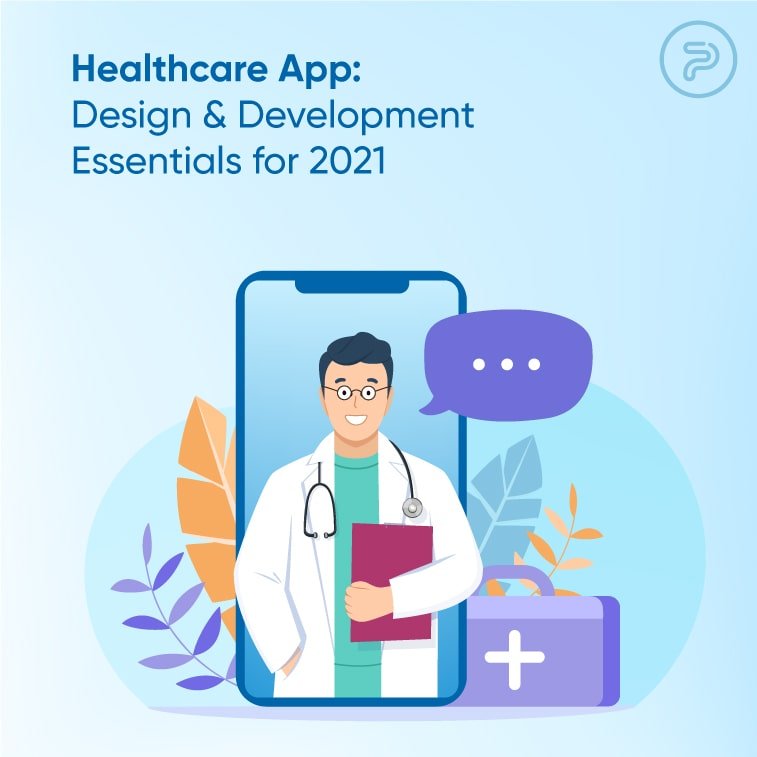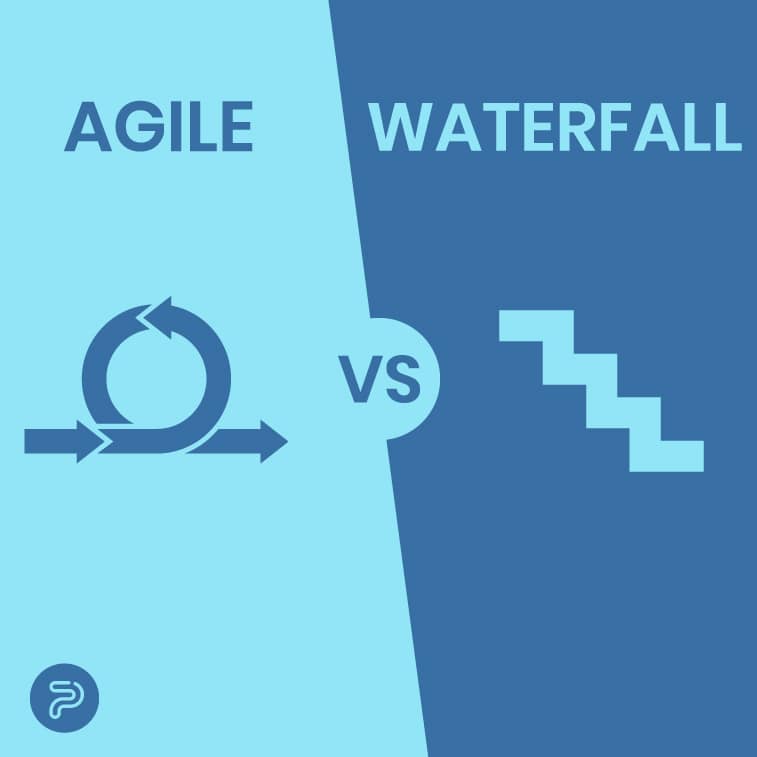The healthcare sector has been undergoing some quite fundamental changes in the past few years. According to experts, the current, last quarter of 2020 will be even more determining to the ever-growing online healthcare platform and app development services.
As more and more medical experts start to move toward technology and digital advancements to simplify and make their work more efficient, mobile health has become a growing staple in general healthcare practices and an important way to help patients with their illnesses or to keep their health in check.
Mobile app development is advancing within the healthcare sector at a rapid pace making the industry one of the biggest revenue contributors in the world of app development.
In 2017, the healthcare sector contributed around $25 billion, and in 2023, the projected sum is said to total at $4.9 trillion.
What made these applications so popular within the industry? How are they shaping the way people keep tabs on their health and how can it help medical experts, especially now, during the COVID-19 outbreak? What trends does to future hold for healthcare apps? Read on and find out.
The Reason Behind Healthcare Apps
Simply put, the main reason behind these pieces of software is to help ensure remote medical assistance. But, on the other hand, they also help simplify everyday life by introducing a more relaxed way to monitor our health.
When you set out the create a medical app, you need a lot of different things to take into consideration. You need to streamline your ideas, look into current trends, and follow the necessary development processes. Below, you’ll find that this guide tries to give you all the necessary info to incorporate the best and the latest features that will make your app a worthwhile investment for you, medical professionals, and patients alike.
Future Trends
If you are looking to create a useful app, the first thing you should do is look into the latest trends and expert forecasts. This way, you can develop an app that will be relevant in the healthcare industry.
Here are some of the key features that will be a mainstay in the future:
- Great data analytics features: Without a second guess, Big Data will be a powerhouse feature in upcoming years. Big Data helps experts determine the amount of medicine and medical equipment that needs to be bought, used, deployed, and so on. Especially now, during the worldwide pandemic, data analytics is a must feature for all forthcoming medical apps. Besides, data insights can help medical experts find new methods to improve the current health crisis.
- 5G connection: Another must-have feature will be real-time digital interaction. The fast data flow has become a necessity in every niche, however, in the world of telemedicine applications, high-speed connection, and data transfer is paramount. As 5G networks are already up and running in several countries, contemplating the application of this tech is a smart move for several reasons. We know, it’s a hardware feature and it has little to do with app development, however, it’s something that you should keep in mind.
- Direct Interaction: Mobile solutions where doctors and patients can interact directly will play a crucial role in the upcoming period, especially as social isolation and other restrictive policies take place to flatten the curve. Telemedicine apps give patients the option of scheduling appointments with their healthcare professionals and can be as effective as a real-life appointment.
- AI: Artificial intelligence often goes hand in hand with Big Data to create a useful and relevant application. How? AI can help a great deal with processing and analyzing large data chunks and can help speed up decision-making processes. Also, AI features may even help to improve diagnostics and to implement proper courses of treatment quicker.
- Blockchain: This relatively new cloud tech can help doctors get info about their patients all the time while providing a secure space for their information which is guaranteed to remain unchanged or used without their knowledge.
Determining the Ideal App
Let’s be honest for a moment. Incorporating the latest tech is only one aspect of a great healthcare app. In such a huge industry, determining the exact niche within the sector is also paramount.
See what’s out there and try to figure out what the market lacks.
To help you get started, here are a few ideas:
- On-demand doctor apps: These pieces of software list certified healthcare professionals with whom people can set up appointments with. If you are going with something like this, detailed filters should be your top concern as users will want to select doctors by location, expertise, availability, and so on. Doctors should also be able to create their own profiles, however, to avoid possible scams, incorporate an algorithm that verifies medical licenses.
- Doctor’s appointment app: This app’s sole purpose is to help patients book their appointments with their health care expert or general practitioner. Nothing fancy: schedule a preferred time and then hold a meeting online. This is a great feature not only when patients are so unwell that they aren’t really able to leave their homes but during such trying times as the current pandemic.
- Reminder apps: An app with a simple purpose ? to remind people to take their medicines or time or to do their required healthcare tasks. It might be not the best idea for a standalone app, so think more about it as a must-feature for a doctor’s appointment app, or as an accompanying feature for any healthcare app.
- Applications for chronic disease monitoring: Records health data daily and sends them to doctors so they can help with determining any treatment changes or other recommendations to help the patient cope with their condition. Glucose meters and blood pressure monitors all fall into this category and their main purpose is to help patients live a fuller yet safe life without constant or daily medical supervision.
- Fitness apps: Among the most popular healthcare apps in the industry, these cater to everyone who wishes to live a healthy lifestyle and wants to keep their health in optimal condition. Features should include calorie consumption/burning monitoring, taken steps, exercise monitors, heart rate monitors, weight tracking, and so on. Keep in mind that these apps work best with fitness watches and wristbands, so if you’re planning on launching an all-in-one fitness app, it should come with a wearable device.
- EHR software: Electronic health records apps (EHR apps) are the most high-end options today. These are complex and intricate systems that may have all or some of the features mentioned above contained. An EHR app should be highly interactive, with appointment scheduling, sharing features, telemedicine options, and so on. It should be a fully-fledged assistance app that provides adequate remote assistance at all times.
The Benefits
Your app is only as good as the value it offers to its users. That being said, it should encapsulate a handful of advantages both for patients and doctors.
Obviously, the app should improve patient care. Mobile health apps should ensure remote monitoring, without the need for as many personal visits and appointments as before the app usage. Doctors should be able to provide help through the app as it saves time and money.
Secondly, it should also ensure faster diagnosis. Thanks to the different sensors found in modern phones, patients can share almost all kinds of health-related data with their GPs which can lead to a faster and more accurate diagnosis.
Passing electronic health records should also be more efficient and simpler. Both doctors and patients have a more comfortable way of maintaining records via these apps.
Lastly, remote care. The ongoing pandemic made these apps essential and can give patients the assistance they need to maintain their health or to fight their current conditions.
Considerations
Creating the ideal app is no easy job and there are a lot of pitfalls you need to avoid in order to make your application a success. In this section, we will walk you through all those things you should thoroughly take into account (or avoid) to ensure that your app takes off the ground.
- USP not established well enough: When your unique selling proposition isn’t elaborated enough, potential users might not be convinced enough to download or buy your app. Marketing and positioning are key. Think about what the best parts of your app are: what makes it better from the rest? Which are the most usable features? You need to convince your potential users (or investors) that you are in fact offering value and a life-changing application.
- Avoid being silent for too long: Give your development team enough time to create the app but don’t let them slack off. Instead, focus on your marketing efforts and always remind people that you have a great app in the works. Try to streamline the entire development cycle to avoid coming in second or getting your idea stolen.
- The app is too complicated: Your app should ensure simplified healthcare-related processes both for patients and doctors. If the app is too complicated and the user experience is off, it won’t be popular. To play it safe, consider beta testing it before release, to get feedback. Testing previously released, popular apps can also go a long way.
- Having the wrong business approach: Profit is undeniably a huge part of every app-venture, however, you should focus on value first. Don’t sacrifice features just because you don’t have sufficient funds to finance your project. Consider partnering up with a successful healthcare company and work with them to ensure that your app is created for the right purposes with the right people in charge.
- Hire the right team: This one is simple: to get the best app, you should work with the best developers.
Healthcare App Development
By now, you probably see that coming up with a functioning app from scratch is no walk in the park. There are many nuances to take into account and even more pitfalls to steer clear of. From the standpoint of development, there are a couple of crucial steps you should take, and in this section, we will cover them all.
Do Your Research
Before anything else, you want to conduct a thorough analysis to see where your app ?fits in?. Why do you want to develop it? Detailed research should help you find those market niches that aren’t already oversaturated with different solutions already. Knowing what the market wants (or lacks) can also help you come up with the necessary features.
You probably know this, but making an exact replica of an already existing app won’t make yours a sensation. You need to build a unique piece of software that gives something new to users.
Set Up Your Target Audience
Always know whom you are creating the app for. When you’re done with researching the market, you should shift your focus to specific locations, demographics groups, and study their specific problems and preferences. In the end, your app should have everything these people need.
Choosing the App Type
If you want to succeed, then you will need to be thorough during every step of the planning process. That being said, based on the data you’ve gathered, try to figure out what’s the best-fitting app type to launch on the market.
Don’t Forget About Business and Money
Without a business plan, your project will be still vulnerable. You need to reduce all risks and to make your project attractive for investors at the same time. Having a detailed business plan can help you with avoiding certain pitfalls and can help you with having a better understanding of how you should use your resources as well.
Resources bring us to another important question: funding. If you don’t have the funds to support the entire development process, you should consider attracting investors. A business plan can be a great way to entice them and to pitch your idea the right way.
On the other hand, crowdfunding and other options can also prove to be sufficient alternatives.
Legal Compliance
Healthcare and medical apps should also comply with local (and more often than not national, and international) regulations since they process and store essential user data. You should also know that different countries have different processes and regulating documents. For example, if you are planning to launch your app in the US, the software should be HIPAA compliant first (in Europe, they’re called GDPR regulations). On the other hand, the US also has other healthcare regulations that can change depending on the type of the app, medical equipment used, and so on, so checking them before launching your app is crucial.
Don’t Slack off On Design
We speak a lot about the importance of proper UI/UX design services. Apart from being a visually attractive app your software should also be equipped with an interface that’s easy to understand, intuitive, and offers users a pleasant experience.
Aim for a consistent design that allows the user to navigate through the application without any problem. Avoid creating an overly complicated interface ? the fewer interaction points the better overall experience.
Commence to Development
After you’ve managed to tackle yourself through all the points above, it’s finally time to start to develop your app. To be on the safe side, start with creating a minimum viable product (or MVP) that only sports the basic features. It can help you evaluate the viability of the app with the smallest amount of money spent.
We’ve also covered this before, but hiring a qualified development team shouldn’t be taken haphazardly. They will be responsible for the quality of your product and as such, look for a full-fledged scope agency or team who’s able to hammer out any idea you throw at them.
The Barriers
While healthcare apps are potentially changing not just the way professionals and people alike experience healthcare, there are a few elephants in the room that we can’t ignore.
First is the lack of accessibility. The truth is, not all regions and hospitals can afford such apps and portable devices. On the other hand, insufficient broadband connectivity can also be an issue not just for hospitals but for patients as well. Lastly, we shouldn’t forget that not every senior citizen is handy with smartphones and other digital gadgets.
The second issue stems from skepticism. Some people still embrace old-fashioned methods. Some patients and doctors alike think that the digitization of healthcare processes won’t be of help to them. They are also concerned about malfunctions and errors which might hinder therapy and treatments. Lastly, some patients also worry about data safety.
This may seem a bit discouraging, however, trends and perspectives are changing toward a more positive outlook. According to a ResMed study, around 56% of the asked people from the survey reported that they used at least one mobile app to monitor their health or fitness levels.
This might not be much, however, it proves that trust in these apps is on the rise and people see and understand the benefits stemming from digitalization.
To make this all happen, patients and the general public are only some of the pieces to the puzzle. Doctors also need to get convenient with using these applications and to ensure proper usage, experts believe that nationwide implementations on a governmental level might be the fastest way to induce change.
These training programs should ensure that physicians learn the necessary digital skills to handle and understand the devices and to harness patient data correctly.
The Takeaway
As you can see, developing a medical app isn’t necessarily a walk in the park. It takes a lot of planning, research, people, knowledge, and patience. However, all technical and business aspects aside, helping the advancements of healthcare and the medical world as a whole is a noble act. Especially in times where normal human social interactions are limited, and when remote solutions are the best way to provide patients with proper diagnosis, courses of treatment, professional advice, and everything else that ensures they’re on the right track toward health and/or recovery.





